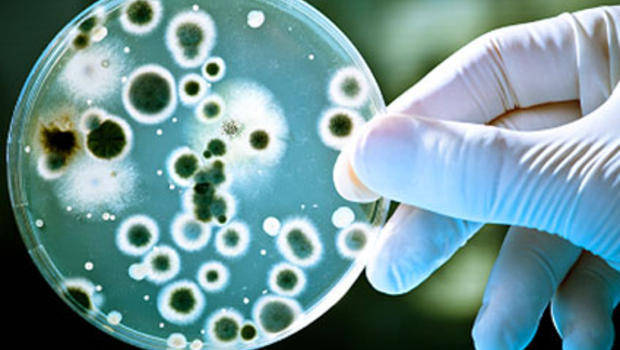The top, most-common mold health symptoms, symptoms of mold exposure, symptoms of deadly or unhealthy black mold and toxic mold, symptoms of mold poisoning, and mold health problems are listed below, in alphabetical order. Learn about available medical mold diagnostic and treatment procedures in the succeeding chapters. A mold victim may experience one or more symptoms or mold illness, and not all occupants will experience the same symptoms and illnesses because people differ significantly in their sensitivity and reaction to exposure to elevated levels of indoor mold growth.
- abdominal pain
- abnormal pap smears
- acid reflux / indigestion
- acne
- allergies and anaphylaxis (severe allergic reaction)
- altered immunity
- asthma and asthmatic signs (sudden onset asthma, increased asthma attacks, wheezing, shortness in breath, coughing, burning in lungs)
- balance problems
- bladder and kidney pain
- bleeding lungs
- blood pressure irregularities
- body aches and muscle pains
- breathing difficulties (tightness in chest, shortness of breath)
- bruising easily
- burning in mouth, throat and lungs similar to acid reflux
- cancer
- central nervous system effects
- chills
- choking
- cholesterol or triglycerides irregularities
- chronic fatigue (chronic, excessive or continued) and/or general malaise
- chronic sinus infections
- coated tongue
- colds, recurring and with decreased resistance to infections
- constipation
- dandruff problems (chronic) that won’t go away despite use of anti-dandruff shampoos
- dark urine
- death in extreme cases
- depression/anxiety/dementia
- dermatitis and skin rashes
- diarrhea
- difficulty concentrating
- difficulty in swallowing
- dirt-like taste in mouth
- dizziness
- dry, hacking cough or coughing up blood (resulting to sore lungs/chest due to excessive coughing)
- early menopause
- eye and vision problems
- eye irritation (burning, watery, or reddened eyes)
- face flushing intermittently
- facial movements inadvertently or extreme jerking
- feeling lost or disconnected from what’s happening around you
- feelings of hopelessness
- fevers
- fibromyalgia (chronic fatigue and widespread pain)
- frequent bloody noses
- frequent infections
- hair loss
- headaches/migraines
- heart attack
- hemorrhagic or hypersensitivity pneumonitis (extrinsic allergic alveolitis, or farmers’ lung disease)
- hypersensitivity to mold
- infertility
- irritability, mood swings, spleen pain or sudden personality changes
- irritable bowel syndrome
- itching of the nose, mouth, eyes, throat, skin or any area
- kidney pain and failure
- large boils on neck
- leaky gut syndrome
- liver pain
- long lasting flu-like symptoms
- memory loss or learning difficulties (brain fog, confusion, Alzheimer’s-like symptoms)
- metallic taste in mouth
- multiple chemical sensitivity
- night sweats and hot flashes
- nose or throat irritation
- nosebleeds
- numbness in face and limbs
- open skin sores and lacerations
- open sores on head
- organic dust toxic syndrome
- peripheral nervous system effects
- physical weakness
- poor appetite
- rashes or hives
- redness of the sclera (white portion of your eyes)
- respiratory distress
- ringing in ears
- runny nose (rhinitis), clear, thin, watery mucus from your nose may appear suddenly, or thick, green slime coming out of nose (from sinus cavities)
- seizures
- sensitivity to smells / odors
- sinus congestion, sinus problems, chronic sinusitis and other nasal problems
- skin rashes or irritation
- skin redness
- sleep disorders
- slurred speech or verbal dysfunction (trouble in speaking)
- sneezing fits (more than three sneezes in a row, happening often)
- spitting up mucous
- swollen glands
- swollen lymph nodes
- systemic candida infection
- tremors (shaking)
- unexplained fevers
- urinary tract infection (UTI)
- vertigo or dizziness
- vomiting (nausea)
- women’s health problems (such as endometriosis and vaginal yeast infections)
- Humans and pets suffer severe health consequences from exposure to elevated levels of indoor airborne mold spores thrown into the breathing air by molds growing on and inside walls, wallpaper, ceilings, floors, carpeting, furniture, window air conditioners, heating/cooling ducts, attics, crawl spaces, and basements.
food allergies

